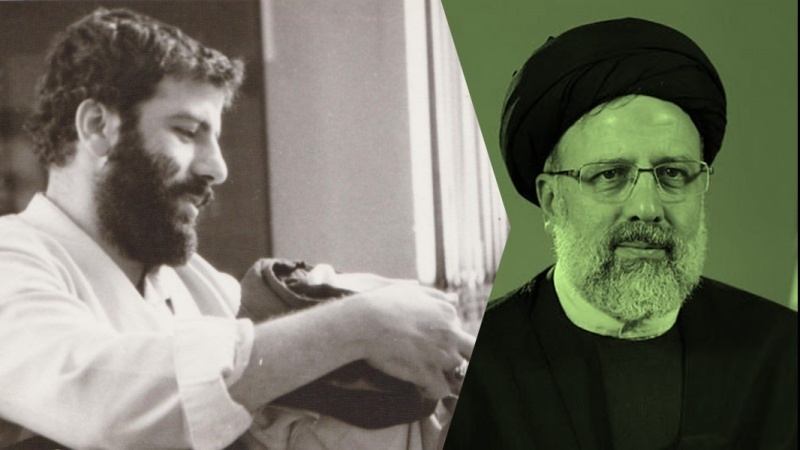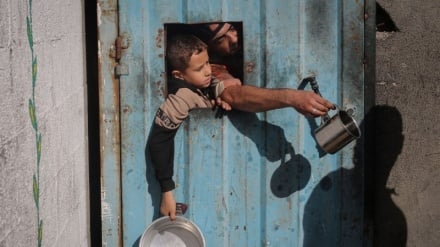Ebrahim Raeisi: A closer look at his life
Pars Today - Ebrahim Raeisi was appointed as the head of General Inspection Organization of Iran in 1994 and held this position for 10 years. During his management of the organization, Raeisi transformed the supervision of administrative bodies and made it systematic, relying on his experiences.
Seyyed Ebrahim Raeisi, the President of the Islamic Republic of Iran, was born in December 1960 in the Noghan neighborhood of Mash'had, into a religious family.
His father, Hojjat ol-Islam Seyyed Haji Raeis al-Sadati, and his mother, Seyyedeh Esmat Khodadad Hosseini, both have a lineage tracing back to Imam Zayd ibn Ali ibn al-Hussein (PBUH), a descendant of the Prophet of Islam.
Raeisi completed his elementary education at Javadieh School and in 1975, he went to Qom Seminary School to continue his studies. He also studied at a school under the supervision of one of Imam Khomeini's close associates.
In defense of Imam Khomeini
After Imam Khomeini (God bless his soul) was insulted in the royalist newspaper Ettela'at in 1978, Raeisi participated in protest gatherings, mostly starting from Ayatollah Boroujerdi's school, and was part of a core group of revolutionary students.
During this period, Raeisi continued his activities by linking up with revolutionary clerics who had been released from prison or were in exile and also participated in gatherings like the sit-in of clerics at Tehran University.
Islamic Revolution
After the victory of the Islamic Revolution, Raeisi participated in a special training course held by Martyr Beheshti to prepare cadres for the management needs of the Islamic system. Following the Marxist riots and various problems in Masjed Soleiman city, southern Iran, Raeisi went to the region along with a group of seminary school students to engage in cultural activities. After returning from Masjed Soleiman, he established the political-ideological complex of the 02 educational camp in the city of Shahroud and managed it for a short period.
Raeisi's entry into the management arena began in 1980 with his presence in the Karaj prosecutor's office. After a while, he was appointed as the prosecutor of Karaj by Martyr Qodusi. Ebrahim Raeisi later took on the responsibility of the prosecutor's office in Hamedan in 1982, serving in this position until 1984.
In 1985, Raeisi was appointed as the deputy prosecutor of the Tehran Revolutionary Court, marking the beginning of his judicial management career. Following his success in resolving complex judicial cases, Imam Khomeini (God bless his soul) directly tasked Raeisi and Hojjat ol-Islam Nayyeri to address social problems in some provinces, including Lorestan, Kermanshah, and Semnan.
Ebrahim Raeisi completed his research in the field of jurisprudence and law, earning the highest level of education in the seminary (Level 4). He ultimately defended his doctoral thesis, titled "The Conflict between the Principle and the Apparent in Jurisprudence and Law."
The Prosecutor General
After the demise of Imam Khomeini (God bless his soul), the founder of the Islamic Revolution, in 1989, Seyyed Ebrahim Raeisi was appointed as the Prosecutor of Tehran by the then-head of the Judiciary and held this position for five years. In 1994, Raeisi was appointed as the Head of the Iranian General Inspection Organization and held this position for 10 years. During his management of the organization, he transformed the supervision of administrative bodies and made it systematic, relying on his gained experience.
The General Inspection Organization of Iran underwent balanced structural development during Raeisi's tenure and was established as one of the pillars of the Islamic Republic's supervisory system.
During this period, many of the knots in Iran's administrative and economic systems were identified, and solutions were developed to combat corruption.
Raeisi also served as the First Deputy of the Judiciary of the Islamic Republic of Iran from 2004 to 2014 and as the Attorney General of Iran from 2014 to 2015.
From 2012 to 2021, Seyyed Ebrahim Raeisi was appointed by the Leader of the Islamic Revolution Imam Khamenei, as the Special Prosecutor of the Special Clerical Court.
Raeisi was also appointed by Imam Khamenei in 2016 to manage the Astan Qods Razavi, a charitable organization, for three years, during which he provided valuable services to the pilgrims of Shia Muslims' 8th imam, Imam Reza's holy shrine and took significant steps to help the underprivileged.
From the judiciary to the presidency
Seyyed Ebrahim Raeisi was appointed as the Head of the Judiciary of Iran on March 7, 2019, by the order of the Leader of the Islamic Revolution Imam Khamenei.
The performance of the judiciary during Raeisi's tenure was elevated in the system of governance of the Islamic Republic of Iran for several reasons. Raeisi, with field management and close follow-up on judicial problems, took decisive and uncompromising action against economic corruption, drafted and finalized the Judicial System Document, and smartened up the judiciary.
He took serious steps towards promoting judicial justice in the Islamic Republic of Iran, to the point where the Leader praised the achievement of this transformation and the creation of hope in the hearts of the people.
In 2021, Seyyed Ebrahim Raeisi participated in the 13th presidential election and won the election with over 18 million votes, becoming the President of Iran.
Additionally, in the 2022 elections for the 6th term of the Assembly of Experts, he was elected to the Assembly for the third time with 82.57% of the votes.
MG
Key phrases: Who was Raeisi, Ayatollah Ebrahim Raeisi, President of Iran.



